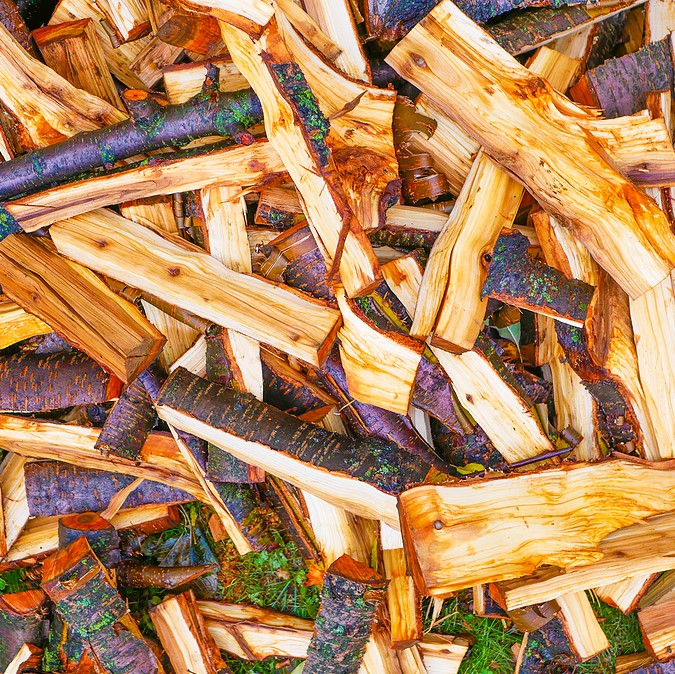Firewood 101: Getting the Most out of Your Fires
While wood logs are much less complex than all the working parts and structures of your wood-burning fireplace, they often cause the most problems. The reason is a lot of people don’t know the basics of firewood and how to use it. In case you need a little primer to getting a good fire going, here are five firewood and fire-burning tips that will make all your fires more productive and enjoyable.

1. Use only dry wood
Wood that’s just been harvested from a tree is full of moisture. It takes about six months for that moisture level to get down into the 20% range. Keep this in mind if you cut your own firewood.
Regardless how you acquire your wood, you can test the logs to make sure they’re ready for your fireplace or stove. One way to test is to split a log and inspect its insides. You’ll be able to feel or see moisture if the wood is still too wet to burn. Another test is to bang two logs together. A clacking, hollow sound tells you the log is fairly dry. A thudding sound tells you it is not.
2. Hardwood vs. softwood
Wood is generally divided into two categories: hardwood and softwood. Hardwoods include maple, hickory and oak. Softwoods include juniper, spruce and redwood. Both types of wood will make a roaring fire, but there are some differences.
The main difference is that hardwoods burn longer and with much less smoke. Softwoods contain more resin than hardwoods, and this leads to more smoke and consequently more flammable creosote deposits in your fireplace chimney or stove vent pipe.
3. Fire science
The science of fire is fairly complicated, but for your purposes, you only need to know the three ingredients needed for fire to happen:
- Fuel (wood)
- Heat (from a match)
- Oxygen (from the air that circulates within the logs
You probably always have plenty of fuel and heat when getting a fire started, but you may not have enough air.
4. Stacking your logs
Avoid stacking logs too tightly together, which impedes the flow of air into the mix. Setting your log stack on a fireplace grate is a good way to get more oxygen circulating. Within the stack, allow some “breathing room,” and never overfill the firebox.
With a proper log stack, a little kindling beneath or on top of it ignited by a match should be all you need to build a fantastic fire.
5. Drafting issues
Air needs to be able to get into the mix to start and maintain a fire, and several things aside from a tight log stack can prevent this.
- Obstructions in the chimney or vent pipe: This can include the nesting material of small animals and falling debris from trees.
 Closed or damaged damper: A huge gust of smoke at the outset of your fire tells you your damper may be closed. If you think it’s open and your fire is hard to start or sends smoke into the room, the damper may be damaged or coated with creosote and soot and be unable to fully open.
Closed or damaged damper: A huge gust of smoke at the outset of your fire tells you your damper may be closed. If you think it’s open and your fire is hard to start or sends smoke into the room, the damper may be damaged or coated with creosote and soot and be unable to fully open.- House that’s too air-tight: Newer homes tend to be built more air-tight, which makes them more efficient. But air-tight isn’t good for getting fires started and keeping them going. Crack a window near the fireplace if you suspect this is causing a drafting problem.
When it’s time to have your appliance inspected, cleaned and repaired, Dubuque Fireplace & Patio of Dubuque, Iowa, is ready to help. We provide chimney sweeping, annual inspections and all types of repair work for fireplaces and stoves. Call us today at (563) 582-5156.
In the Highland, WI, area, call Chimney Specialists at (608) 929-4887.


 (563) 582-5156
(563) 582-5156


